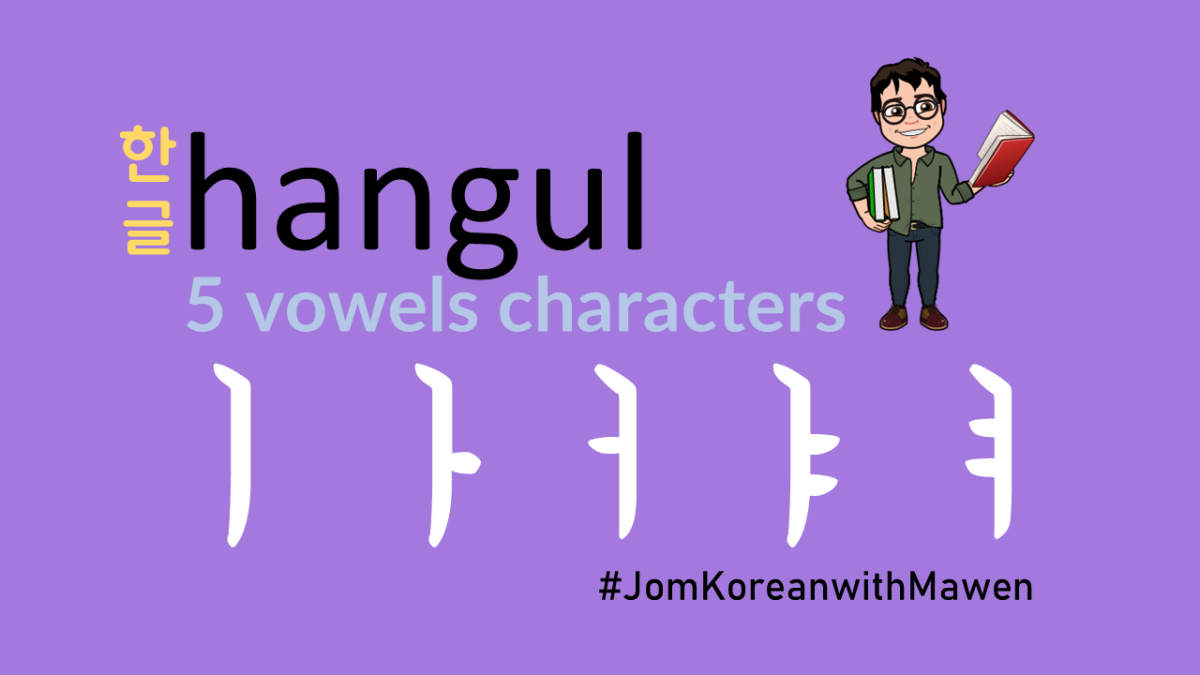Tune in every Saturdays in mydaehan.wordpress.com for the latest Korean lesson from Melvin!
안녕 하세요 (Annyeonghasaeyo)! Welcome to our first Korean learning space with me, Mawen. During this #stayathome period of MCO in our country, we all have that goal achievement list that you hope can achieve them while spending the free time meaningfully at home. People are reading recipes and trying them out in kitchen, some of us spend some couch potato moments to catch up the latest drama, while there are some of us passionately learning a new language.
I started learning Korean when I was 15. I was a ‘Hottest’ (2PM fans) during that young time, and the reason I wanted to learn Korean was because so that I can catch up the lyrics during their music shows to sing-along! Therefore, learning to read Korean was my first mission which eventually brought me into the whole journey of mastering Korean.
Korean characters are known as Hangul/Hangeul, 한글. Hangul is an unique writing system which is easy to learn and master. This is much related to its history. During the ancient Joseon dynasty, Korean language was mainly written in Chinese characters, Hanja. As Hanja was originated from foreign, the Korean language could not expressed fully of its meaning by Hanja. Common people who were not the intelligentsia were having difficulties in communicating with the authorities especially when in needs of black and white. King Sejong during the 1440s felt the sympathy of the people and eventually introduced this writing system in replacing Hanja. This set of 24 letters reflects the root of Korean culture being an independent and an unique identity from other nations. Until now, the Koreans are very proud of Hangul, as they celebrate Hangul Day (한글날) on October 9 every year. King Sejong was honorably respected by every Koreans. It is King Sejong, the one that stands out as a well-known statue of a great man sitting on the throne in front of Gwanghwamum.

Hangul is easy to learn, as it has been simplified into characters with strokes and curves only. You will not be surprising, you can read a passage (without knowing it meaning first) after learning just for few weeks! This is why Koreans’ illiteracy rate is among the lowest. Hangul consists of 24 characters, with 10 vowels and 14 consonants. Combination of this characters form a syllable/word representing a pronunciation. Korean syllables are similar like blocks. Basically, a syllable block must consist of at least one consonant and one vowel character. There are words which represent only a vowel. Therefore, a ‘placeholder’ (ㅇ) is added to make up a valid wording block. Hence, a Hangul character must have at least 2 characters.
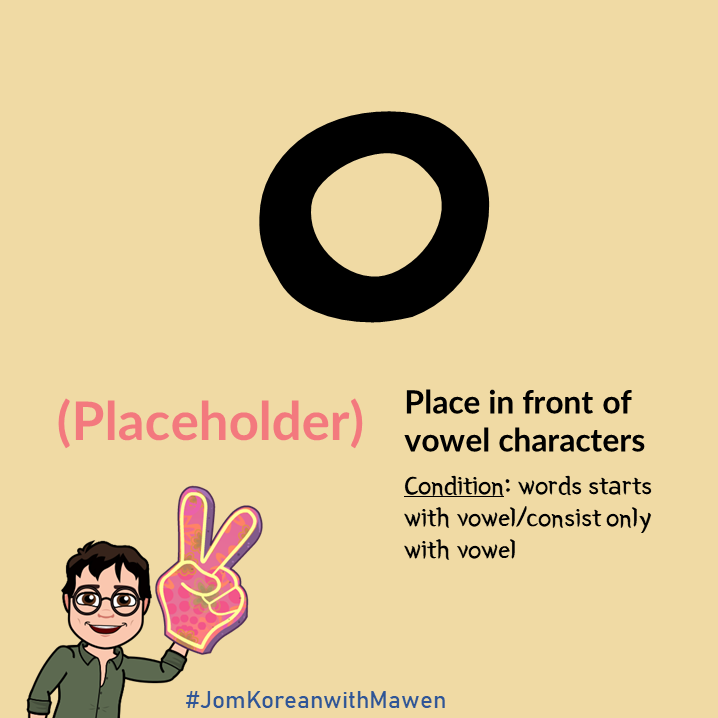
With the understanding of the role of a placeholder, let us start learning the first 5 vowels characters for this lesson. Today’s characters only involve two simple ‘drawing’, long vertical and short horizontal straight lines.
First one, is ‘i’ (pronounce as e). It is written as a straight line from top to bottom. This character can be found from the sexy name of Park Seo-joon in Itaewon Class, Saeroyi (새로’이’).
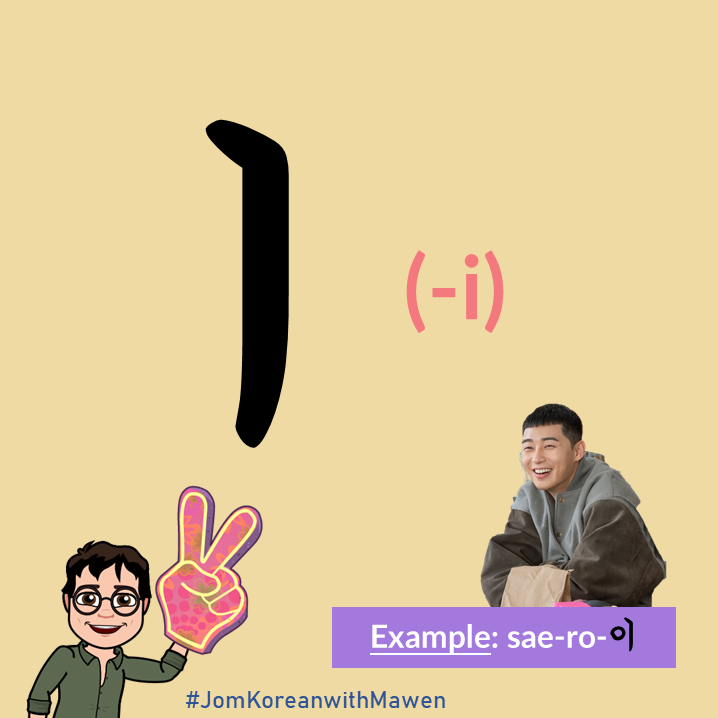
Secondly, draw a short dash at the right middle of ㅣ to turn into ‘a’ (ㅏ), as pronounce as ah. Surprisingly this vowel can be found from a beauty role in Itaewon Class too! Sae-ro-이’s first crush, Soo-ah (수아) has a ‘아’ in her name.
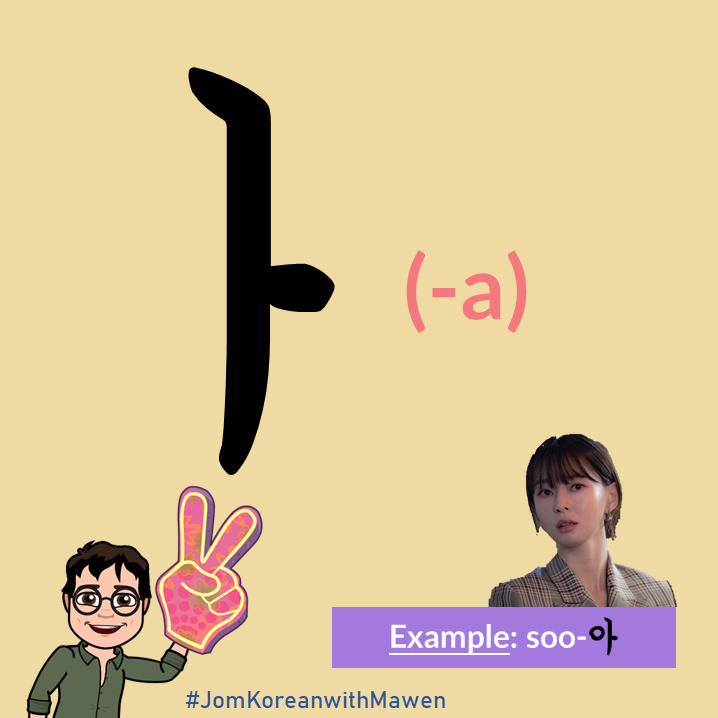
Draw two dash to ㅣ for your third vowel character, ‘ya’ (ㅑ), pronounce like ‘ya’ in yacht. This sounds similar like the expression we often heard from Korean drama, when there are angry, shouting at someone, “야!!!!!!!!!!!!!!!!!!!!!!!”

Let’s get back to the root ㅣ again, but we draw a dash at the middle left. It will be the forth vowel, ‘eo’ (ㅓ), pronounce as ‘oh’. This character is seen in the word ‘eo-je’ (어제), means ‘yesterday’.

We get to the last one already? Draw two dashes on the left of ㅣ to form vowel ‘yeo’ (ㅕ) that pronounce as ‘yo’. Do you know what is ‘woman’ called in Korean? It is ‘yeo-ja’ (여자). Latata latata latata…. Do you know who sang this song? The hot K-pop girl group from Cube Entertainment, (G)I-DLE is called ‘yeo-ja-a-i-deul’ (‘여자’아이들) in Korean!
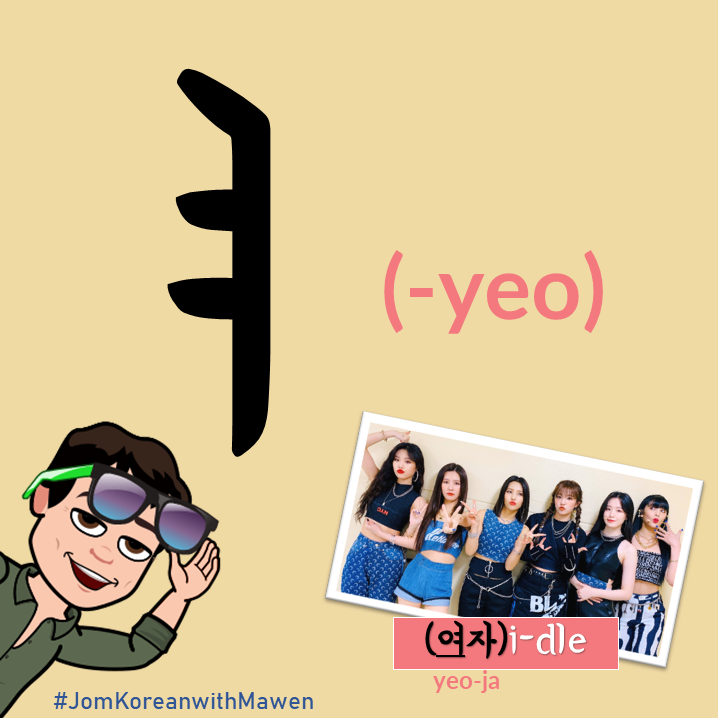
How’s you learning so far? Isn’t it easy to follow? As we have learnt these 5 vowels, what it takes you is to remember and memorize, so you can recognize these characters from far! Practice writing the characters also helps you to carbon copy these patterns into your brain. Therefore, I have prepared you a worksheet to practice writing it! Spend a 5-minute break from your work, and practice writing the characters while pronounce it loudly for your brain to memorize.
Learn Korean with me through #JomKoreanwithMawen video series, while enhance your understanding through lesson posts in MyDaehan to give you the best learning experience!
In next post, we will continue learning another 5 vowels, step-by-step in mastering all the 25 Hangul characters with you!
Tune in every Saturday for new lesson posts and follow our Instagram @mydaehan2020 for #JomKoreanwithMawen video lesson series!
Author

Melvin Tan
Content Manager (Language)
Online Supporter of Korean Embassy in Malaysia
Bio-science student in Universiti Teknologi Malaysia
Korean Enthusiasts
Korean learner for 10 years, but still amateur
Instagram: @tanmawen
